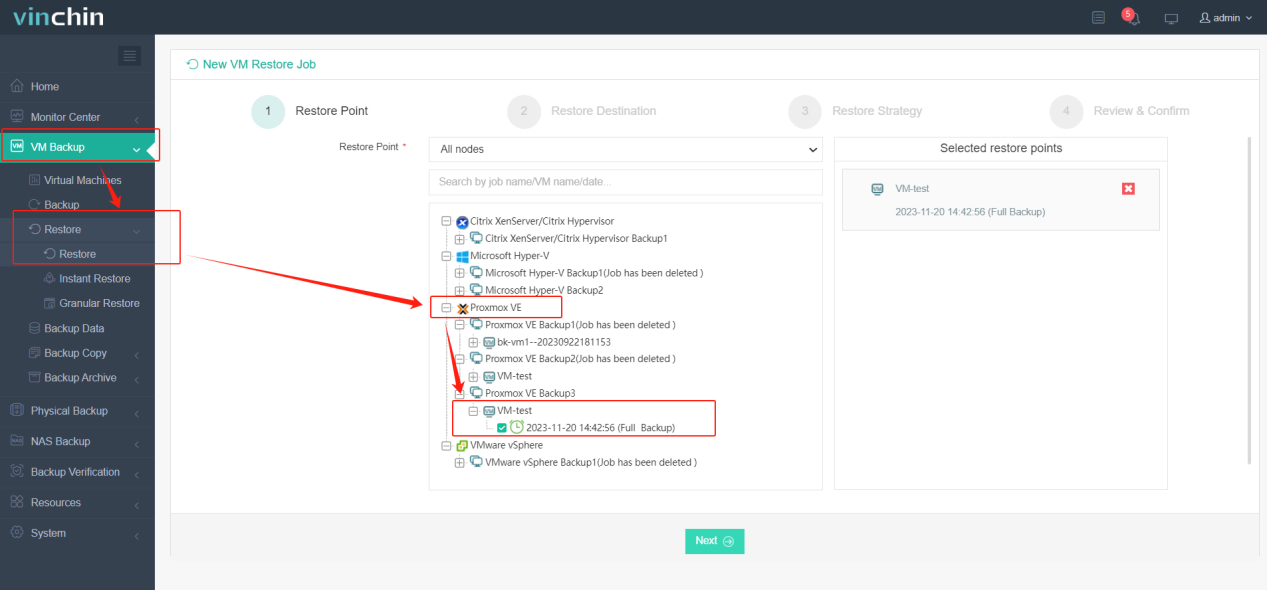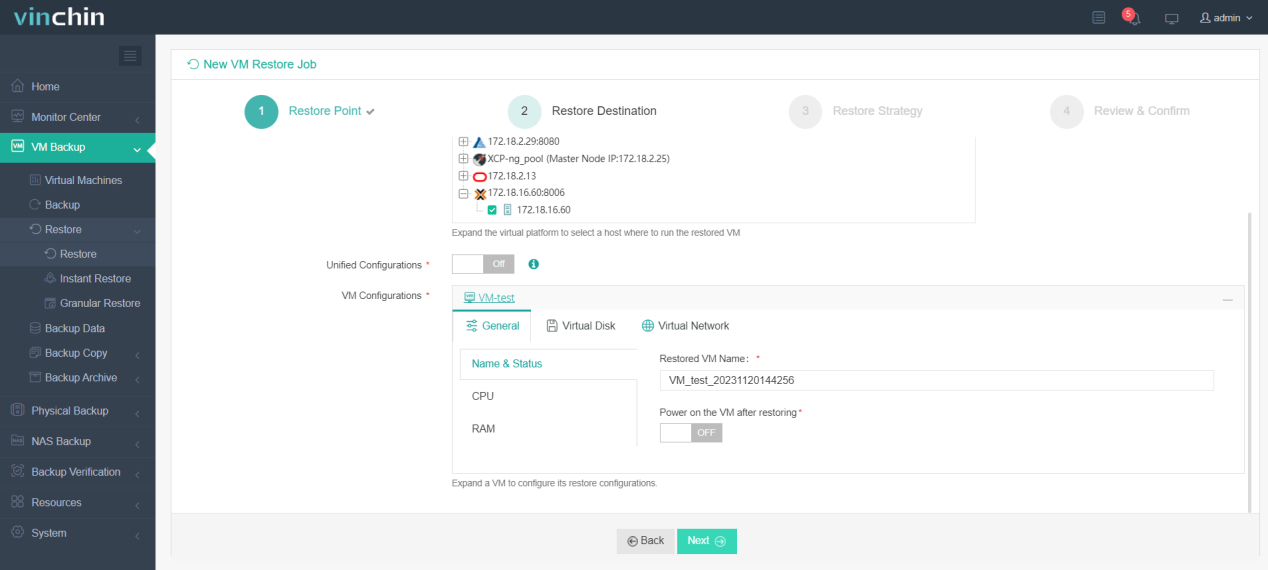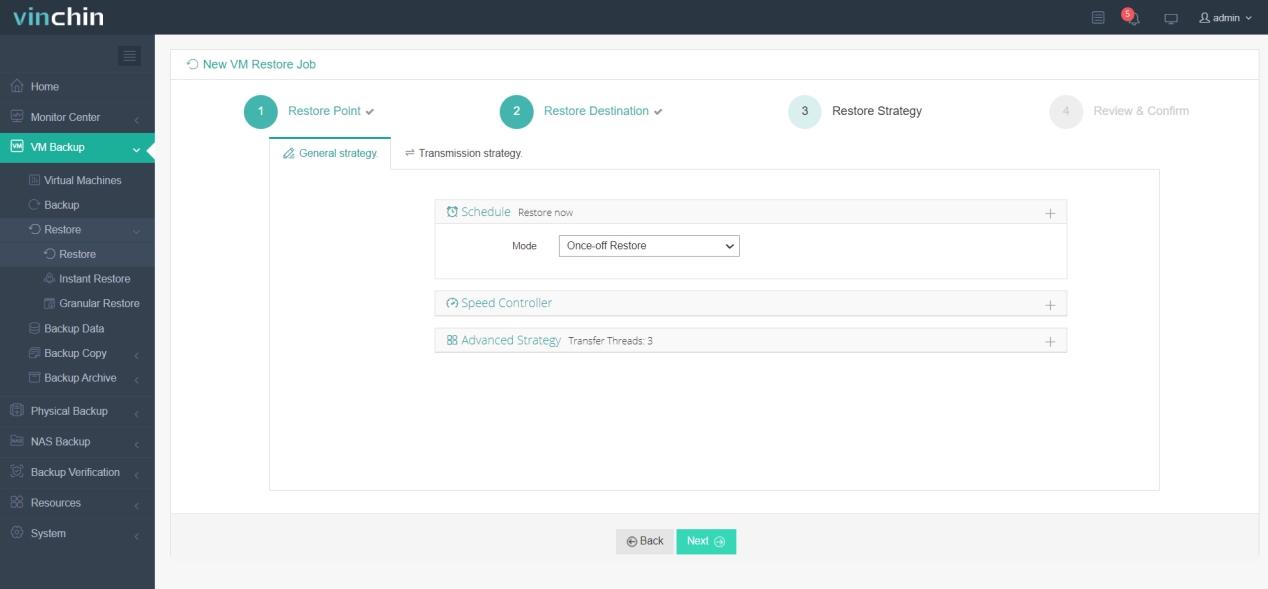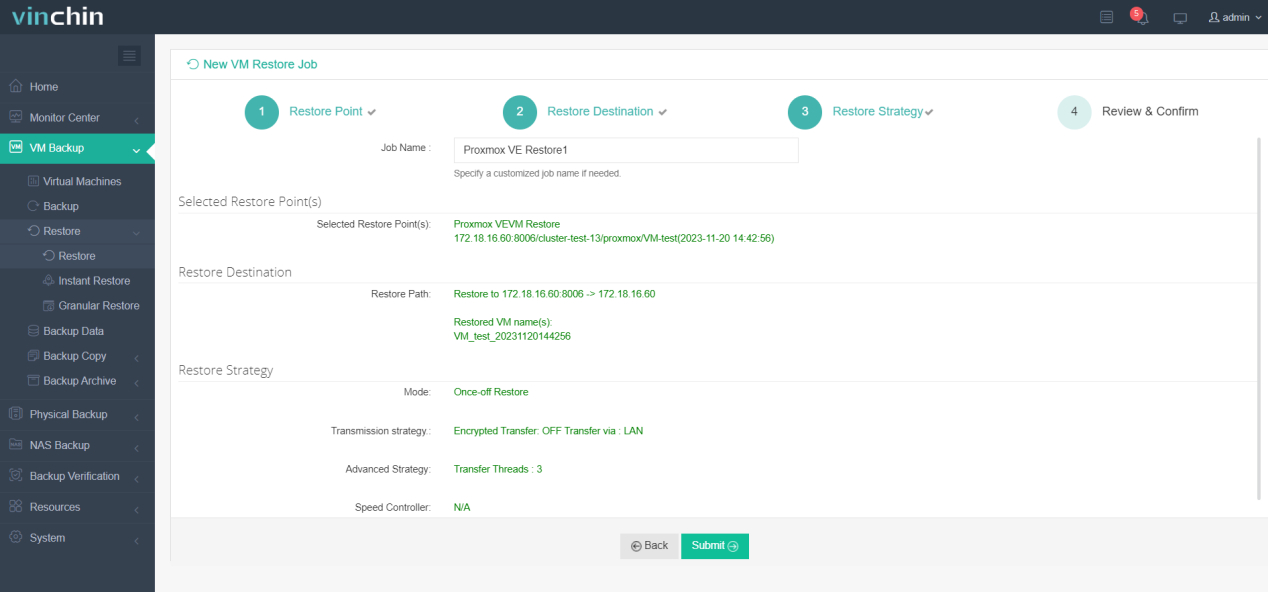-
When do you need to backup Proxmox host?
-
How to backup just Proxmox host configuration files?
-
How to restore Proxmox host configuration files?
-
Backup Proxmox VM with Vinchin Backup & Recovery
-
FAQ
-
Conclusion
In the Proxmox virtualization domain, safeguarding critical configurations and the host environment is crucial to ensuring system integrity and achieving rapid recovery in the face of unforeseen challenges. By establishing robust Proxmox config backup and Proxmox host backup strategies, you can ensure the reliability of the system and the continuity of your business.
When do you need to backup Proxmox host?
Situations that require a backup of the Proxmox host include:
Disaster recovery: In the event of a catastrophic system failure, such as hardware failure, data corruption, etc., backing up the Proxmox host is necessary to enable quick system recovery and ensure minimal business interruption time.
Version Rollback: After performing upgrades or updates to the Proxmox environment, if there are unexpected problems or incompatibility with certain components, the backup Proxmox host can be used to roll back to the previous version to ensure system stability.
Configuration Synchronization: When performing Proxmox host configuration synchronization, it may be necessary to restore the backup files to the original directory. This situation involves reapplying the backed up configuration files to the system to ensure consistency of settings. Caution is required as the restore operation may overwrite the current files, so make sure you have a backup of the current data before performing the restore.
Virtual Machine Migration: It is a common operation to back up the entire Proxmox host before performing a VM migration or backing up a VM. This ensures that the entire system is in a backed up state when migrating or restoring VMs.
How to backup just Proxmox host configuration files?
File-level backup of backup is more granular, backing up only the files you really care about, such as system configuration files. It is suitable for saving important files such as system configuration, rather than a complete copy of the whole system. You can choose to back up specific folders, such as the /etc folder, which contains some critical configuration information. Similarly, you can choose to backup the /var/lib/vz directory, which may contain some important virtual machine data.
By backing up these specific folders, you can reduce the size of your backup. And only these files need to be restored during recovery, not the entire system copy. This approach is better suited for situations where you only care about specific data and configurations and do not need to back up the entire system.
Manual copy
Manual copying involves copying files in /etc or /var/lib/vz from a backup to a new host. You can selectively copy important files. By manually copying specific files, you can better manage the file transfer process and ensure that only those files critical to your new host are migrated and restored. This approach can be customized according to your requirements, providing you with a more flexible and personalized backup and migration solution.
Command Using
The use of command line tools is an efficient method when implementing file-level backups of Proxmox host configuration files. Command line tools such as “cp”, “tar”, and “rsync” provide flexibility and customization, allowing users to selectively back up specific directories and files without having to copy the entire system.
By using these tools, it is easy to back up critical configuration information for Proxmox hosts, such as the /etc/pve directory, which contains important information about virtual machines, storage, network settings, and more. This file-level backup approach helps to quickly restore system configurations when needed, improving system reliability and recoverability. For more complex backup needs, users can also combine different commands and options, such as archiving and compressing with “tar” or synchronizing recursively with “rsync”. By choosing the appropriate backup strategy, you can ensure that the critical configuration files of your Proxmox host are managed and protected securely and efficiently.
How to restore Proxmox host configuration files?
Restores the backup file to the original directory. Note that this may overwrite the current files, so use caution before performing a restore.
If you wish to make a backup of the entire Proxmox host, you can create an OS-level backup using commands or specialized solutions. Such a backup includes not only configuration files, but also the entire system state to ensure complete recovery in case of system failure or data corruption. Choosing the appropriate backup and restore method is critical to maintaining the integrity and functionality of your Proxmox host.
To perform a restore operation, you can follow the steps below:
1. Determine the restore location: Before performing a restore, make sure you know the exact location of the backup file and the destination directory you wish to restore it to. Make sure the destination directory is the same as the original system to avoid problems with mismatched configuration file paths.
2. Backing up the current data: Since a restore may overwrite the current files, it is strongly recommended to back up the current data before performing a restore operation. This can be accomplished by manually copying or creating another backup. This way, after the restore, you can recover any files that were overwritten due to the restore.
3. Restore using command line tools: Depending on the backup tool you are using, use the appropriate command line tool to perform the restore operation.
4. Check the restore result: After the restore is completed, carefully check the files in the restore directory to make sure that all important configuration files and data have been restored correctly.
5. Test system functionality: After performing the restore, test the system functionality to ensure that everything is working properly. Ensure that the Proxmox host is up and running and verify the status of all critical services and virtual machines.
Backup Proxmox VM with Vinchin Backup & Recovery
Backing up Proxmox hosts can be performed using the third-party backup software Vinchin Backup & Recovery. Vinchin Backup & Recovery is a backup professional tool that supports multiple virtual machine platforms (e.g. Proxmox, VMware, Hyper-V, XenServer, XCP-ng, oVirt, RHV, etc.), databases, NAS and Windows/Linux servers. The tool provides fast and efficient backup functionality, allowing you to securely perform backups and restores of files, directories, and servers with ease. With the versatile Vinchin Backup & Recovery, you can easily manage and protect critical data in your virtual environment.
Vinchin Backup & Recovery’s operation is very simple, just a few simple steps.
1. Select the one to be backed up

2. Then select backup destination

3. Select strategies

4. Finally submit the job

Vinchin provides a complimentary 60-day trial, allowing users to explore the functionality in a real-world setting. For additional details, kindly reach out to Vinchin directly or get in touch with our local partners.
FAQ
Q: What are the requirements for the storage location of backup files?
A: Backup files should be stored in a safe and secure location. Preferably on a different storage medium or location to prevent backup and source data from being compromised at the same time.
Q: Is it possible to automatically back up the Proxmox host on a regular basis?
A: Yes, it is possible to set up a schedule for automatic periodic backups of the Proxmox host to ensure that the system is continuously protected by backups.
Conclusion
Ensuring Proxmox virtualization system integrity demands robust backup strategies. Backing up Proxmox host is crucial for disaster recovery, version rollback, configuration synchronization, and VM migration. File-level backups, manual copying, and command-line tools offer flexibility. Vinchin Backup & Recovery stands out as a versatile solution for secure and efficient data protection.
Share on:







